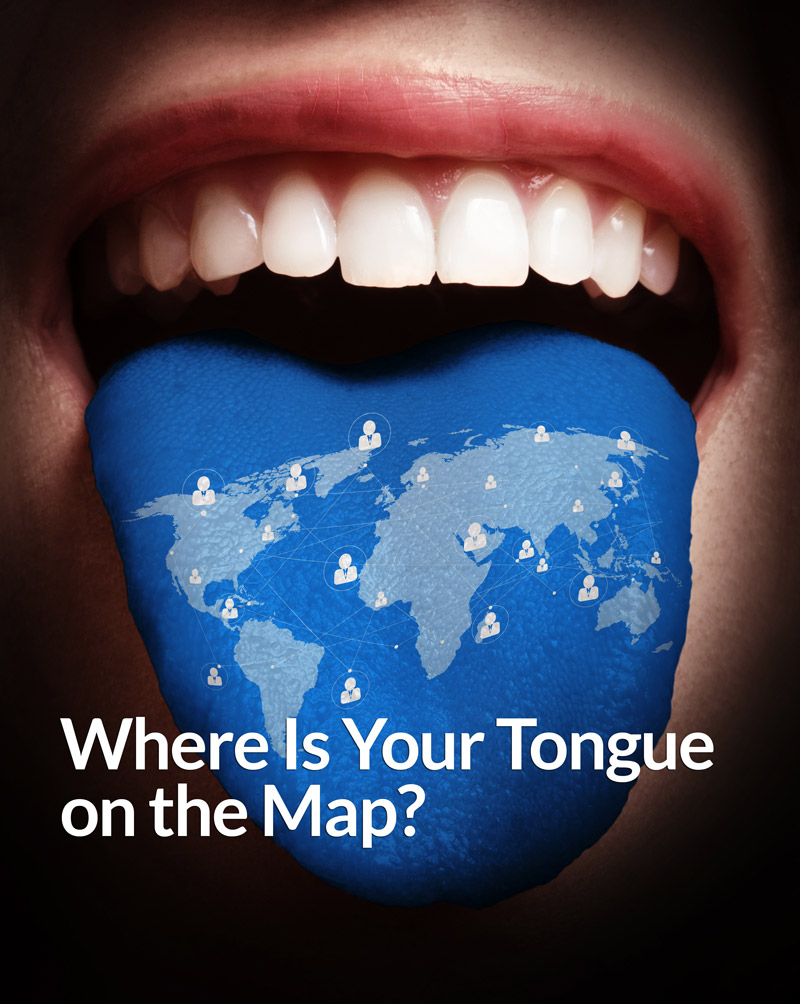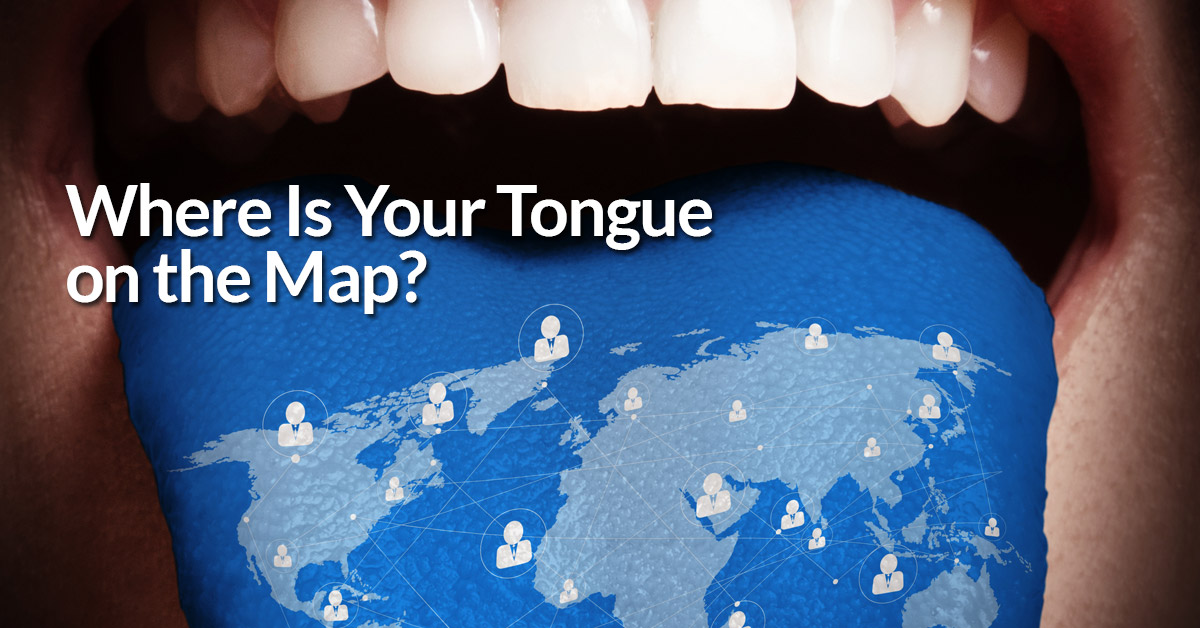According to dictionary.com, the definition of the word “topography” is the detailed mapping or charting of the features of a relatively small area or locality or the relief features or surface configuration of an area.
And since we all studied geography in school, we are used to seeing topographic maps of mountains and valleys. But did you know that the tongue has topography? And that differences in tongue topography can have an impact on how likely it is you might have bad breath?
How Does Tongue Topography Contribute to Bad Breath?
The rougher the surface of the tongue is, the greater the incidence of problem breath. The normal, healthy tongue is smooth and pink with slight shininess due to the normal flow of saliva.
As cracks and fissures develop in the tongue, so do homes for nesting bacteria that can cause bad breath. There is a wide range of tongue type and health, from normal to hairy, dry-coated to black-coated and smooth to geographic. Let’s just focus on a couple of these to talk about how they can promote bad breath.
We have already talked about the healthy tongue. But did you know that if the papillae, those little fibers on the surface of your tongue, are longer than normal this is called a “hairy” tongue? Eww!
The longer those little papillae are, the rougher your tongue gets and bacteria have more places to hide and cause bad breath. And, no matter what you may think, scraping your tongue won’t “shave” off those little “hairs” and make your tongue smooth – in fact, scraping will only injure your tongue! To clean a hairy tongue, TUNG Brush and Gel is safer and more gentle and provides better results.
What is Geographic Tongue?
A “geographic” tongue is so-named because of large white patches surrounded by red borders. And those borders can change locations due to many different factors, such as stress, illness, or hormonal changes or even reactions to different mouthwash components! But, interestingly enough, a geographic tongue, despite its appearance, is not necessarily prone to bad breath because it lacks the fissures and hiding places of other tongue types.
So the next time you look at your tongue, see if you notice its topography. If it has deep grooves or fissures, or long papillae, you may be in for some bad breath. And, of course, using the Original TUNG Brush and Gel as part of your daily oral hygiene routine will help keep those bad breath bacteria from invading your tongue’s borders!



